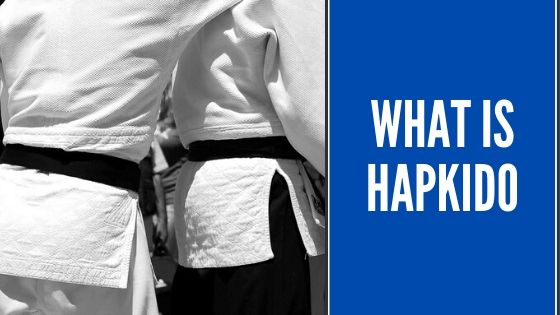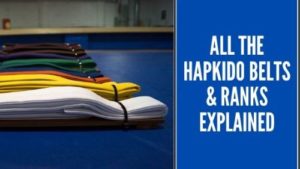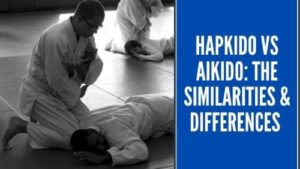There was human presence in Korea 30,000 years ago who were constantly involved in tribal wars. The earliest traces of cities and civilization emerged in Korea 4,300 to 2,000 years ago. There existed three Korean kingdoms hence it was known as the era of the three kingdoms of Korean Peninsula.
Buddhism was the official religion for the people which encouraged some Indian influences such as martial arts. Consequently, literature, economics, and arts developed during that period. Martial arts were developing in conjunction with the other forms of art including HAPKIDO.
Since Korea is geographically close to China and Japan, martial arts quickly spread to these countries, motivated by the commercial and cultural exchanges they had between themselves and the people of Korea.
The first records of warrior culture known as “Hwa Rang” which means flower warriors, appeared in the sixth century AD. The warriors practiced martial arts as well as poetry and painting and were known to be the most intellectual people of the time.
Disputes among the warriors led to the embracing of Hwa Rang by the Korean societies. The unification of Korea and Hwa Rang influence led to the longest-lived dynasty in the history of Asia (992 year old Stilla dynasty).
Hapkido originated from Japan-Korea in 1958. The founder of this form of martial arts was named Choi Yong-Sool. He was born in Korea but lived in Japan where he studied martial arts. Choi was once a pupil of Master Takeda Sukaku together with Morihei Ueshida who was the founder of Aikido years later.
The Japanese had restrictions not to teach their martial arts to foreigners hence there are a few records of Choi Yong-Sool being a pupil of Takeda Sukaku. However, Takeda disregarded the restrictions and took in Choi as one of his pupils due to his commitment to learning martial arts.
Choi Yong-Sool had lived in Japan for over 30 years when his Master Takeda died. He abandoned service to his Master’s family and returned to Korea where he started teaching his own version of what he had learnt from his Master.
He also incorporated a strong component of Korean traditional martial arts and called it “HAPKIDO” in 1958 previously called by other names. Initially, these methods were not used together with kicks and punches but were later incorporated by Choi’s disciples. The technical systemization of HAPKIDO is mainly attributed to Chin II-Chang who was one of Choi’s disciples.
The word “HAPKIDO” IS derived from the following acronyms:
- HAP- means coordination
- KI- refers to the vital energy given to us by the universe
- DO- refers to the path
Therefore, Hapkido means the path of coordination and the power of the inner energy
Hapkido Belt Ranking
Generally, there are two belts in Hapkido, the white and black belt. The rank distinction was utilized during the late 1970s and early 1980s as a result of testing values by South Korean built Taekwondo organizations.
Most hapkido organizations have six belt levels that guide a student through ranking.
- 1st Level: At this stage, a student learns the basics of hapkido. This is a white belt level where the student is introduced to basic techniques such as punch and chop, defending against parallel and front wrist grabbing using one hand.
- 2nd Level: After advancing from the white belt, a student successfully joins the yellow belt level. At this point, you are able to learn techniques like defense against diagonals, lobs and the 25 basic kicks.
- 3rd Level: This is a two yellow belt level. In this martial art form, a student is able to learn defense against the front clothes while clutching with one hand.
- 4th Level: The highest point of this rank is being able to learn defense against being grabbed at the back. This is a blue belt level.
- 5th Level: This is also a blue belt level where a student is taught to defend against punches. It is important to note that this level is importantly crucial.
- 6th Level: This is a fairly advanced level where a student attains a red belt after attaining techniques in defense against choking, defense against armed attack and defense against choking. This level has four to five levels of red belts.
Famous Hapkido Techniques
Hapkido is a fully self-defence art, which includes a wide range of striking, throwing, kicking, and immobilizing techniques. Grandmaster Myung Yong Kim who is the founder of Hapkido Jin Jung Kwan and Grandmaster Chang Soo Lee, the head of the martial art school teaches the essential skills of Hapkido which include kicks, strikes and blocks via videos. They teach over 75 techniques of Hapkido, which include:
- Vital point theory
- Stance
- Vital point attacking
- Danjun breathing for beginners, intermediate and upgraded levels
- Striking using the elbow, knife-hand, and back fist
- Blocking using single and double hands
- Falling forward, backward, side aero and rolling falls
- Single kicks, double kicks, combinations and special kicks for a total of 51 kicks
In 1980, Lee Chang Soo became a national hero in Korea after he knocked out the Indonesian champions at his first blow which tempted the National Defence of Indonesia to invite him as the national coach.
The National government of Korea made him the chief of demonstration of Hapkido techniques. He is one of the few disciples of Grandmaster Kim Myung- Yong, The founder of Jin Jung Kwan Hapkido and currently resides in Houston, Texas.
Hapkido Level of Difficulty
Hapkido is an easy to learn art, suitable for all ages and abilities. However, some schools will only train students in Hapkido once they have acquired a black belt in Tae Kwon Do arguably because Hapkido makes use of some of the techniques in Tae Kwon Do kata. Hapkido is considered to be a “soft” art but this does not insinuate that it is easy on the opponent.
An ordinary training session contains practice of techniques (striking, throws and grappling), sparring, meditation and other exercises to develop internal energy.
The practitioner may benefit from the training sessions by being lean or muscular. However, strength is not a mandatory requirement to train in Hapkido. The Korea Hapkido Association has the following technical requirements for learners, developed by He-Young Kimm in 1991 ranging from the 1st degree to 5th-degree Black belts:
1st Degree Black Belt
- Punch defense
- Single kicks
- Wrist grab defense
- Clothing grab defense
- Kick defense
- Combination kicks
- Jumping kicks
- Throw defense
- Knife defense
- Attacking technique
2nd Degree Black Belt
- Advanced wrist grab defense
- Advanced clothing grab defense
- Advanced kick defense
- Advanced punch defense
- Choke defense
- Advanced attacking techniques
- Defense from a sitting or lying posture
- Special kicks
3rd Degree Black Belt
- Short stick techniques
- Joint locking counters
- Staff techniques
4th Degree Black Belt
- Sword techniques
- Cane techniques
- Defense against multiple attackers
5th Degree Black Belt
- Rope techniques
- Knife throwing techniques
- Techniques using the opponent’s force
- Revival techniques
Wrapping Up
Hapkido training and techniques are of essence for the purpose of self-defense, gaining self-esteem, self-respect and good self-mage. Currently, it comes with several flavors since it was engineered by Grandmaster Choi Yong-Sool.
Since it was originally intended for use against trained martial artists, it helps practitioners not to underestimate their opponents. Additionally, the continued training in Hapkido in divergent ways contributes to the preservation of the culture and heritage of the Korean people as well as the Japanese and Chinese who adopted the art.
Hapkido, just like other martial arts, allows a student to test and grade themselves while leading them through a run of different belt rankings and levels. For more Hapkido content here.






